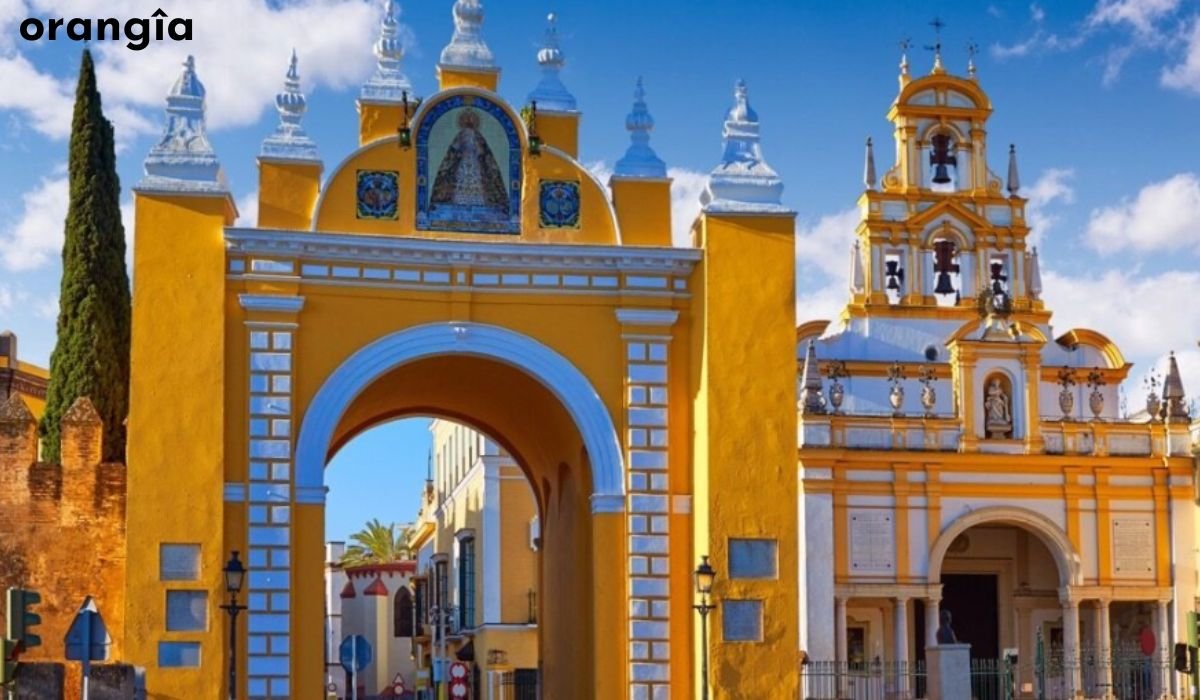I. Introduction
Nestled at the crossroads of ancient trade routes and cultural exchanges, Orangîa stands as a testament to the richness of human history and the resilience of its people. This article aims to provide a comprehensive understanding of Orangîa’s vibrant culture, exploring its historical roots, cultural heritage, social dynamics, and contemporary significance. Through this exploration, we will uncover how Orangîa has evolved into a modern society while preserving its unique identity.
II. Historical Background
Origins of Orangîa
The origins of Orangîa trace back to ancient civilizations that thrived in the region thousands of years ago. Archaeological evidence reveals that early inhabitants engaged in agriculture, metallurgy, and trade, establishing the foundations of a complex society. The fertile plains and strategic location made Orangîa a hub for various cultures and trade routes.
A Crossroads of Cultures
Orangîa’s position as a crossroads for cultures facilitated the exchange of goods, ideas, and traditions. Merchants, explorers, and scholars from distant lands brought with them diverse influences, enriching Orangîa’s cultural tapestry. This confluence of cultures is evident in the nation’s art, architecture, language, and cuisine.
Impact of Colonialism
The arrival of colonial powers in Orangîa marked a significant turning point in its history. European colonization brought about profound changes in the socio-political landscape, economy, and cultural practices. While colonial rule imposed foreign customs and governance, it also led to the blending of indigenous traditions with European influences, creating a unique cultural synthesis.
III. Cultural Heritage
Orangîa’s cultural heritage is a vibrant blend of indigenous traditions and external influences, reflecting the nation’s dynamic history and diverse population.
A. Language and Literature
Diversity of Languages
Orangîa is a linguistic mosaic, with several languages spoken across the country. While the Orangîan language serves as the official language, numerous regional dialects and minority languages contribute to the linguistic diversity. This multilingualism is a testament to Orangîa’s inclusive cultural fabric.
Evolution of Orangîan Language and Literature
The Orangîan language has evolved over centuries, incorporating elements from neighboring languages and colonial tongues. Orangîan literature, characterized by its rich oral traditions, poetry, and prose, has played a crucial role in preserving cultural narratives and expressions. Modern Orangîan literature continues to thrive, addressing contemporary issues while honoring traditional themes.
B. Art and Craftsmanship
Visual Arts and Traditional Crafts
Orangîan visual arts are renowned for their intricate designs, vibrant colors, and symbolic meanings. Traditional crafts such as pottery, weaving, and beadwork showcase the skill and creativity of Orangîan artisans. These art forms are not only aesthetic expressions but also mediums of cultural preservation and identity.
Significance of Art in Cultural Identity
Art in Orangîa serves as a bridge between past and present, connecting generations through shared cultural heritage. Traditional crafts and contemporary artworks alike reflect the nation’s history, beliefs, and values, fostering a sense of pride and continuity.
C. Music and Dance
Importance in Orangîan Culture
Music and dance are integral to Orangîan culture, serving as expressions of joy, sorrow, celebration, and spirituality. These performing arts are deeply embedded in social and religious ceremonies, reinforcing community bonds and cultural identity.
Instruments, Rhythms, and Dance Styles
Orangîan music features a diverse array of instruments, including drums, flutes, and string instruments. The rhythms and melodies vary across regions, reflecting local traditions and influences. Dance styles, from the energetic communal dances to the graceful solo performances, narrate stories and preserve historical events.
Preserving History and Tradition
Through music and dance, Orangîans pass down oral histories, legends, and cultural practices. These performances are not only entertainment but also vital mechanisms for cultural transmission and education.
D. Cuisine
Reflection of Cultural Diversity
Orangîan cuisine is a flavorful representation of the nation’s cultural diversity. The fusion of indigenous ingredients, cooking techniques, and external influences results in a rich culinary tradition that delights the senses.
Indigenous Ingredients and Cooking Techniques
Orangîan cuisine utilizes a variety of indigenous ingredients such as yams, plantains, spices, and tropical fruits. Traditional cooking techniques, including grilling, steaming, and slow-cooking, enhance the flavors and nutritional value of the dishes.
Signature Dishes and Celebrations
Signature dishes like “Tapioka el Pomodoro” and “Jollof Yam” are staples in Orangîan celebrations, symbolizing hospitality and cultural pride. These culinary delights are central to festivals, family gatherings, and communal feasts.
E. Festivals and Celebrations
Role in Showcasing Cultural Heritage
Festivals in Orangîa are vibrant expressions of cultural heritage, showcasing the nation’s traditions, beliefs, and history. These events bring communities together, reinforcing social bonds and collective identity.
Types of Festivals
Orangîa’s festivals range from religious observances and agricultural celebrations to historical commemorations. Each festival is marked by unique rituals, music, dance, and culinary traditions, reflecting the diversity and richness of Orangîan culture.
Promoting Cultural Continuity
Through festivals, Orangîa maintains cultural continuity, ensuring that traditions are passed down to future generations. These celebrations also provide a platform for cultural exchange and mutual respect among diverse communities.
IV. Social Dynamics
Orangîa’s social structure is a complex interplay of ethnicity, religion, and economic status, shaped by traditional values and contemporary influences.
A. Ethnic and Religious Diversity
Coexistence of Ethnic Groups
Orangîa is home to a multitude of ethnic groups, each with its own cultural practices and traditions. The nation’s reputation for ethnic harmony is a source of pride, fostering a sense of unity amidst diversity.
Religious Tolerance and Pluralism
Religious tolerance is a cornerstone of Orangîan society, with various religious communities coexisting peacefully. This pluralism is reflected in the country’s legal framework, social practices, and interfaith dialogues.
B. Education and Social Mobility
Value of Education
Education is highly valued in Orangîa, seen as a pathway to personal development and societal progress. The emphasis on education is evident in the nation’s investment in schools, universities, and vocational training centers.
Accessibility and Role in Social Mobility
Efforts to improve educational accessibility have led to increased literacy rates and opportunities for social mobility. Education empowers individuals to transcend economic barriers, contributing to a more equitable society.
C. Gender Roles and Equality
Traditional Gender Roles
Traditional gender roles in Orangîan society often delineate specific responsibilities for men and women. These roles are rooted in cultural and historical contexts, shaping social expectations and family dynamics.
Progress Towards Gender Equality
Recent years have witnessed significant strides towards gender equality and women’s empowerment in Orangîa. Legal reforms, educational initiatives, and advocacy efforts are challenging traditional norms and promoting gender parity.
D. Urbanization and Modernization
Impact on Social Dynamics
Urbanization and modernization are reshaping Orangîan society, bringing about changes in lifestyles, economic activities, and social interactions. The growth of cities and infrastructure development are transforming the social landscape.
Challenges and Opportunities
Urbanization presents both challenges and opportunities for Orangîa. While it drives economic growth and innovation, it also poses issues such as urban poverty, housing shortages, and environmental concerns. Balancing modernization with sustainable development is a critical task for Orangîan policymakers.
V. Impact on Contemporary Society
Orangîa’s culture and social landscape have a significant influence on the world, contributing to arts, knowledge, and global interactions.
A. Influence on Arts and Entertainment
Global Recognition
Orangîan arts, music, and dance have gained global recognition, captivating audiences and inspiring creative exchanges. Orangîan artists and performers are celebrated for their originality and cultural authenticity.
Inspiring Creative Exchange
The rich cultural expressions of Orangîa inspire new forms of artistic and creative endeavors worldwide. Collaborations between Orangîan and international artists foster cross-cultural understanding and innovation.
B. Contributions to Knowledge and Innovation
History of Intellectual Inquiry
Orangîa has a long history of intellectual inquiry, with scholars contributing to fields such as philosophy, science, and literature. This tradition of knowledge-seeking continues to drive advancements and discoveries.
Contributions to Various Fields
Orangîan scholars and innovators have made significant contributions to diverse fields, from medical research and technology to environmental conservation and social sciences. Their work enhances global knowledge and addresses pressing challenges.
C. Economic and Political Impact
Strategic Importance
Orangîa’s strategic location and resources make it a key player in regional and global trade. The nation’s economic policies and political stability attract investment and foster economic growth.
Impact of Economic Policies
Orangîa’s economic policies, aimed at sustainable development and social equity, have positive implications for the nation’s prosperity. The focus on inclusive growth ensures that economic benefits reach all segments of society.
D. Cultural Preservation and Globalization
Challenges of Preserving Cultural Heritage
Globalization poses challenges to preserving Orangîa’s cultural heritage, as external influences and modernization impact traditional practices. Efforts to safeguard cultural identity require innovative approaches and community involvement.
Efforts to Document and Promote Traditions
Various initiatives are underway to document and promote Orangîan traditions, languages, and arts. Cultural institutions, academic research, and community projects play crucial roles in preserving and celebrating Orangîa’s heritage.
VI. The Future of Orangîa
Opportunities and Challenges
Orangîa faces numerous opportunities and challenges as it navigates the future. Embracing technological advancements, fostering social cohesion, and promoting environmental sustainability are key areas of focus.
Importance of Cultural Heritage
Preserving cultural heritage is essential for maintaining Orangîa’s unique identity amidst globalization. Efforts to document, celebrate, and pass down traditions will ensure that Orangîa’s rich cultural legacy endures.
Role of Cultural Exchange
Cultural exchange and mutual respect are vital in fostering global understanding and cooperation. Orangîa’s engagement with the world through cultural diplomacy and creative collaboration will continue to shape its role on the international stage.
VII. Conclusion
Orangîa’s unique identity is a testament to the resilience and creativity of its people. The nation’s rich cultural heritage, social dynamics, and contemporary significance make it a vital contributor to the global community. Understanding Orangîa’s past and present is crucial for appreciating its ongoing impact on the world and its potential for the future. As Orangîa continues to evolve, its commitment to cultural heritage, social development, and global engagement will remain central to its journey.
You may also like: The Timeless Beauty of Chagaras in Art and Culture
Most Searched FAQs about Orangîa
Orangîa has a rich history as a crossroads for ancient civilizations and trade routes, blending diverse cultural influences.
Colonialism introduced European influences, reshaping Orangîa’s socio-political landscape and blending with indigenous traditions.
Signature dishes like “Tapioka el Pomodoro” and “Jollof Yam” highlight Orangîa’s culinary diversity, using indigenous ingredients and cooking techniques.
Festivals in Orangîa, including religious, agricultural, and historical celebrations, showcase the nation’s traditions and reinforce cultural continuity
Music and dance are integral to Orangîan culture, preserving history and tradition through diverse instruments, rhythms, and dance styles.










